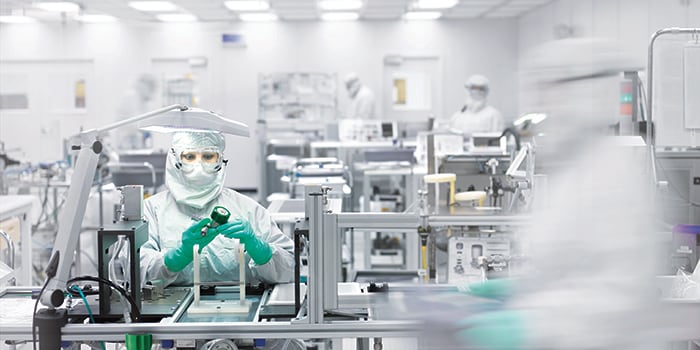Innovation for The Next Generation of Semiconductor Manufacturing

Innovation for the Next Generation of Semiconductor Manufacturing
Masroor Malik
The rapid progression of smart technologies has accelerated the transition of semiconductors from microelectronics to atomic-scale dimensions. As highlighted at this year’s SEMICON West Expo in California, the industry continues to make transformational developments to keep up with an evolving digital landscape. New-age technologies like artificial intelligence and big data are key drivers of growth and with it comes a need to pack bigger power into small chip sizes. This means fabrication will become much more complex.
Developing the next generation of advanced technology presents a host of unique considerations. New pressures arise in finding ways to improve product performance and innovate designs while the need to reduce costs in system ownership still sits front and center. The show painted a pressing need to meet stricter requirements and adapt to increasingly high-temperature/high-flow applications through reliable process control.
As the industry embarks on a new generation of sophistication, greater responsiveness, improved component reliability, and confidence that chemistry can be delivered with maximum precision will be key.
Advancing Semiconductor Manufacturing for the Future
The industry continues to ride a wave of “smart everything” and innovations presented at SEMICON convey this trend will continue for the foreseeable future. With a rise in smaller, thinner, and faster device types, precision will become paramount.
System equipment must enable precision in high temperature chemical delivery, dosing, and cleanliness – regardless of operating conditions. Greater control over process variables will need to be prioritized at each stage of the manufacturing process in order to stay competitive and meet evolving demand.
From source to exhaust, greater thermal control and contamination prevention are key. In the gas box, it’s the ability to switch chemical delivery with optimal control. At the point of use, processes need to enable precise high temperature chemical delivery, greater dosing accuracy, and cleanliness. Finally at the exhaust stage, focus should be placed on purging excess chemistries while maintaining optimum pressure.
With the proper hands-on training and educational tools, you can gain greater confidence in meeting manufacturing goals, and more importantly, ensure processes and personnel operate safely in a rapidly evolving industry that allows no margin for error.
The Importance of Capacity in Meeting New Quality Standards
As evident at SEMICON, the world of smart technology will require a shifting of priorities. The show underscored intensifying demand for increased device performance, suggesting new material and methodologies for wafer production will be warranted.
The next generation of applications will have demanding cleanliness requirements. This highlights a need to build new capacity into the production process. But as a single company, adding capacity to innovate performance can be costly. You might consider collaborating with component manufacturers whose cleanroom capacity can support new quality standards and accommodate sudden spikes in demand. Greater capacity can lessen the potential for production stoppages or shortages and allow final products to reach the market more quickly. Reducing production bottlenecks can help make a world of “smart everything” increasingly possible.
Streamlining Output with Greater Contamination Control
Just as preventing airborne cleanliness is important, cross-contamination from switching volatile gas streams can be a threat to processes as well. Valves that can handle chemical transitions smoothly are an increasingly attractive option in systems, as they can aid in better contamination and flow control. Ultrahigh-purity valves that offer effective shutoff, maintain moisture-free flow and ensure the highest-level of gas purity can enable repeatable gas switching, shorten purge times, and prevent downtime from unnecessary recalibration.
Proper installation can help ensure cleanliness is sustained throughout the manufacturing process. System components must work together to maintain leak-tight seals on toxic and corrosive fluids. You might consider a hands-on training program that offers best practices around installation and maintenance procedures.
Reliability: The Difference in Fulfilling an Order or Losing Business
Among notable trends discussed at SEMICON included a surge in temperature requirements for new applications. Presentations emphasized a growing need for semiconductors to operate at high temperatures in order to ensure its qualifications can meet application requirements. Therefore, greater focus must be placed on sustaining component reliability in challenging operating conditions.
In semiconductor manufacturing, components can be subject to highly corrosive or toxic environments and must survive high-temperature exposure. When exposed to high heat though, gas delivery assemblies can clog and lead to underperformance. Eventually this could result in component replacement, contributing to downtime and bringing manufacturing processes to a halt.
As systems become more complex and demanding, manufacturers must continue to adopt greater component reliability and process control to improve system performance. In a world of “smart everything”, system reliability must be achieved to ensure quality performance is sustained and evolving needs can be met.

